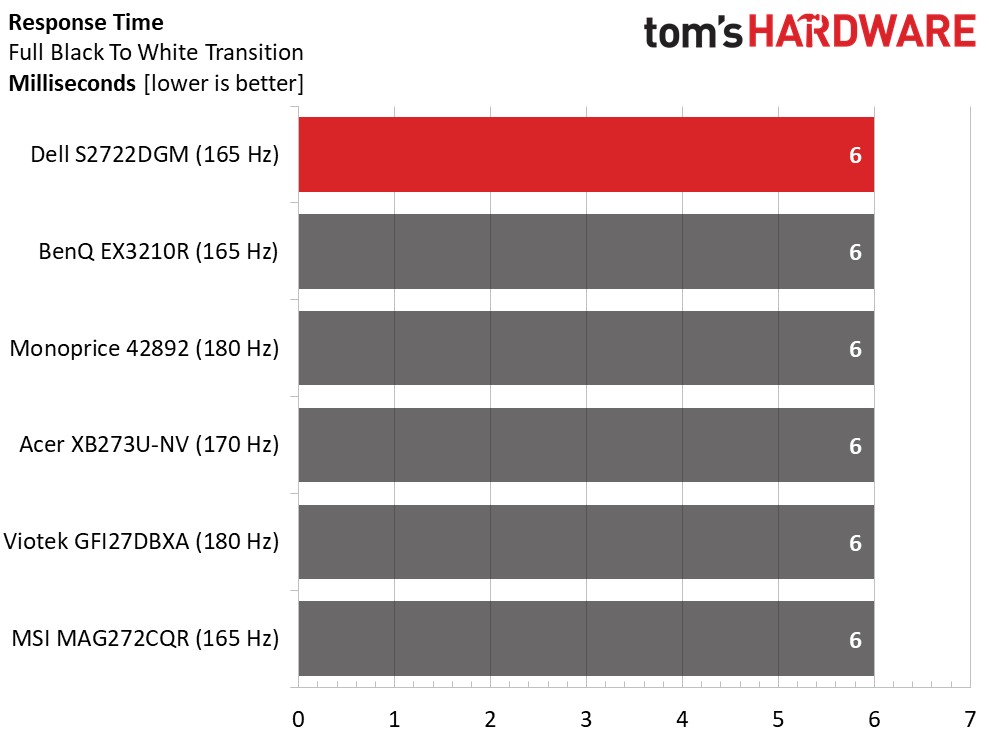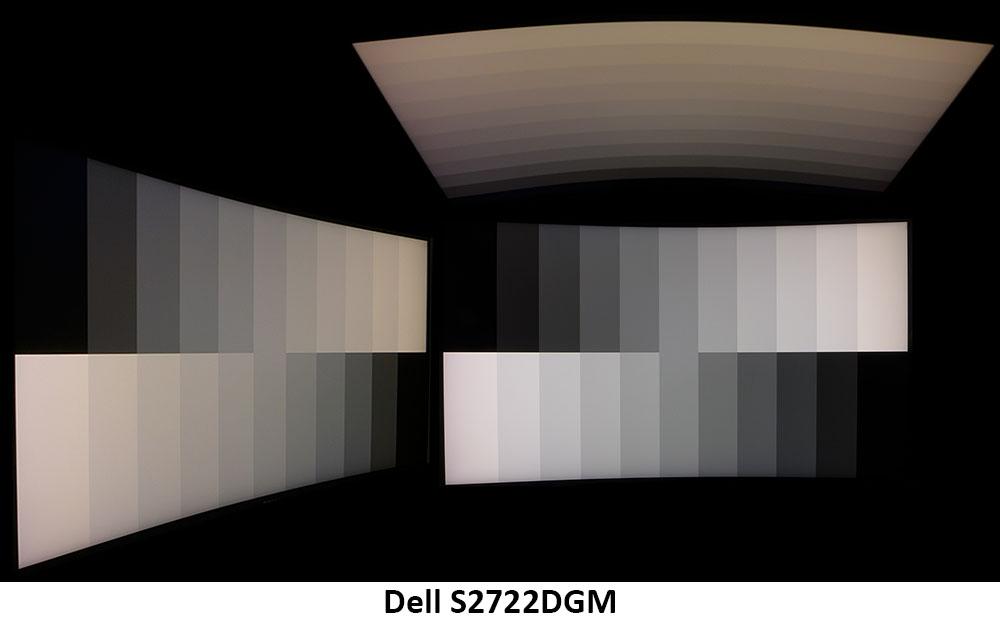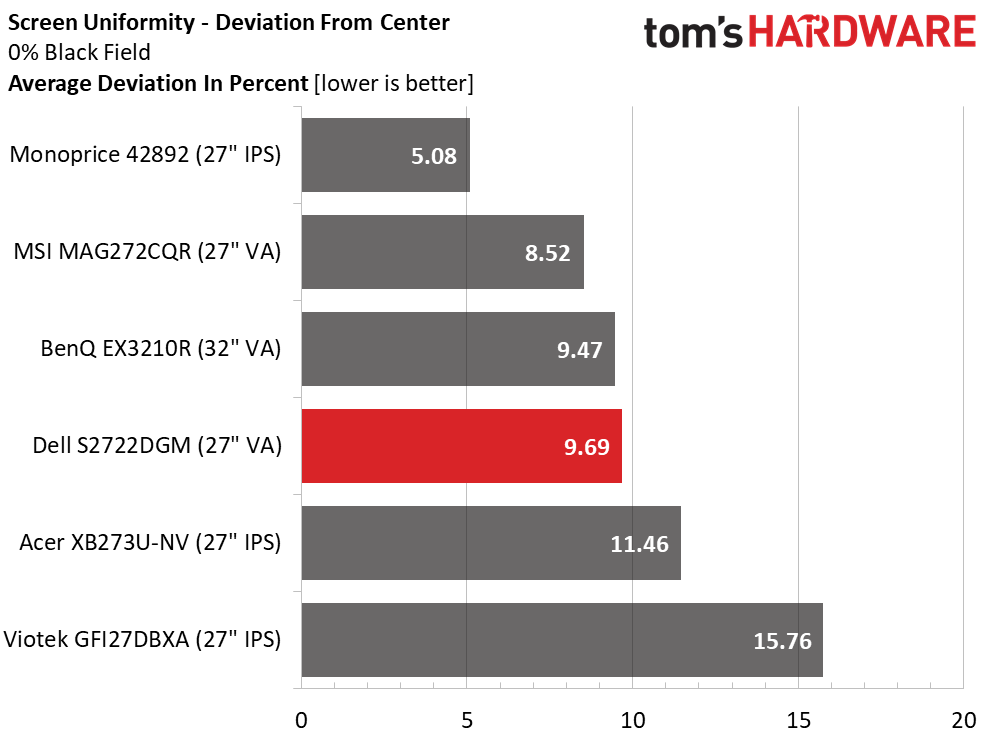Why you can trust Tom's Hardware
There are plenty of QHD monitors available for comparison to the S2722DGM. I’ve included both VA and IPS panels, 27 inches with one 32-incher, BenQ’s EX3210R. The others are Monoprice’s 42892, MSI’s MAG272CQR, Acer’s XB273U-NV and Viotek’s GFI27DBXA. Refresh rates are 165, 170 and 180 Hz.
Pixel Response and Input Lag
Click here to read up on our pixel response and input lag testing procedures.


You can see that there is no difference in screen draw times between 165, 170 and 180 Hz. 6ms is it for this group. That means motion resolution looks the same to the eye with all the monitors. The difference is in the input lag score. There, you can expect a small bump in performance with a higher rate, though the MSI makes more of its 165 Hz than Monoprice does with 180 Hz. The S2722DGM isn’t as quick as the top four, but it’s well in the hunt with 32ms of total lag. Unless you’re gaming for a living, it’s plenty fast.
Viewing Angles
If off-axis image quality is a priority for you, IPS is still the better technology. VA is better than TN in this regard, but any VA panel will have some color shift and brightness reduction when viewed from the sides. The photos were taken at 45 degrees off-center in horizontal and vertical planes.
A curved 27-inch monitor is too small for sharing in any case, but the S2722DGM is best enjoyed while flying solo. The picture washes out a bit to the sides and quite a bit from the top view. However, this is typical VA panel performance.
Screen Uniformity
To learn how we measure screen uniformity, click here.
My S2722DGM sample showed very good screen uniformity. Its score of 9.69% means there was no visible glow or bleed. The light meter showed the center zone to be the brightest but not by much. Gray and white full-field patterns showed no variation in luminance or color.
Get Tom's Hardware's best news and in-depth reviews, straight to your inbox.
Current page: Response, Input Lag, Viewing Angles and Uniformity
Prev Page Features and Specifications Next Page Brightness and Contrast
Christian Eberle is a Contributing Editor for Tom's Hardware US. He's a veteran reviewer of A/V equipment, specializing in monitors. Christian began his obsession with tech when he built his first PC in 1991, a 286 running DOS 3.0 at a blazing 12MHz. In 2006, he undertook training from the Imaging Science Foundation in video calibration and testing and thus started a passion for precise imaging that persists to this day. He is also a professional musician with a degree from the New England Conservatory as a classical bassoonist which he used to good effect as a performer with the West Point Army Band from 1987 to 2013. He enjoys watching movies and listening to high-end audio in his custom-built home theater and can be seen riding trails near his home on a race-ready ICE VTX recumbent trike. Christian enjoys the endless summer in Florida where he lives with his wife and Chihuahua and plays with orchestras around the state.

